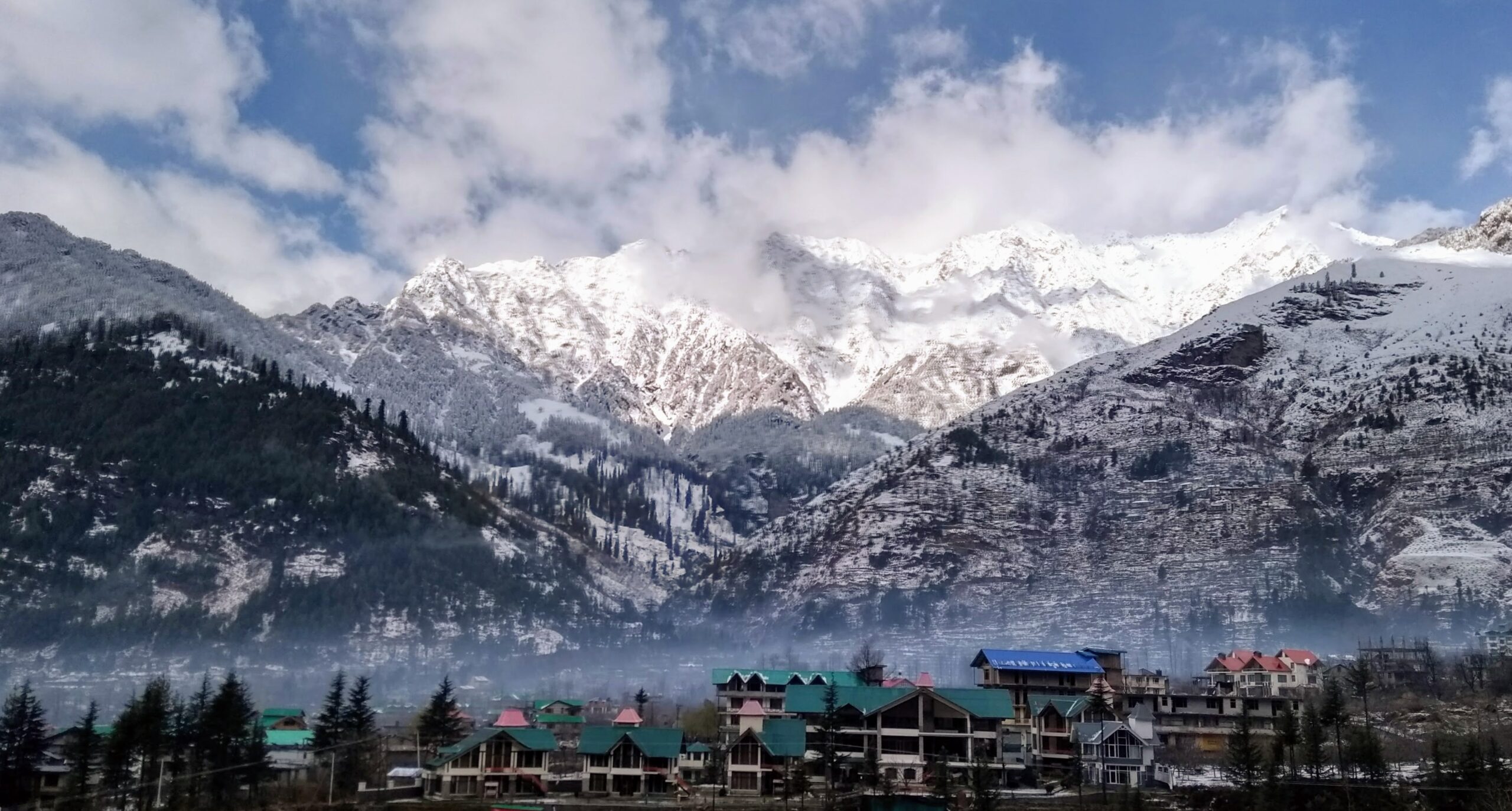HIMACHAL EXPERIENCE
Situated in north India amidst the lower Himalayan ranges, Himachal Pradesh is a breathtaking state synonymous with lush greenery, spectacular views of mighty mountains and valleys, a rich culture, delicious food, adventure sports, a colonial past, and so much more. An absolute treat for adventure seekers, families, honeymooners and solo travellers, the many cities within the state have plenty to offer to tourists and locals alike.
Shimla is the state’s capital and was once the summer capital of British India, as is evident by the many attractions dating back to the colonial period, including The Ridge. Another one of Himachal’s most commonly visited cities is Manali which experiences snowfall during the winters, attracting large crowds. Tourists flock to Solang Valley and Rohtang Pass since they are renowned for trekking, paragliding, skiing, horse riding and other adventure sports. The state is easily accessible via road, be it in a car, cab or bus, via the railway and sometimes via flight.
HIMACHAL EXPERIENCE
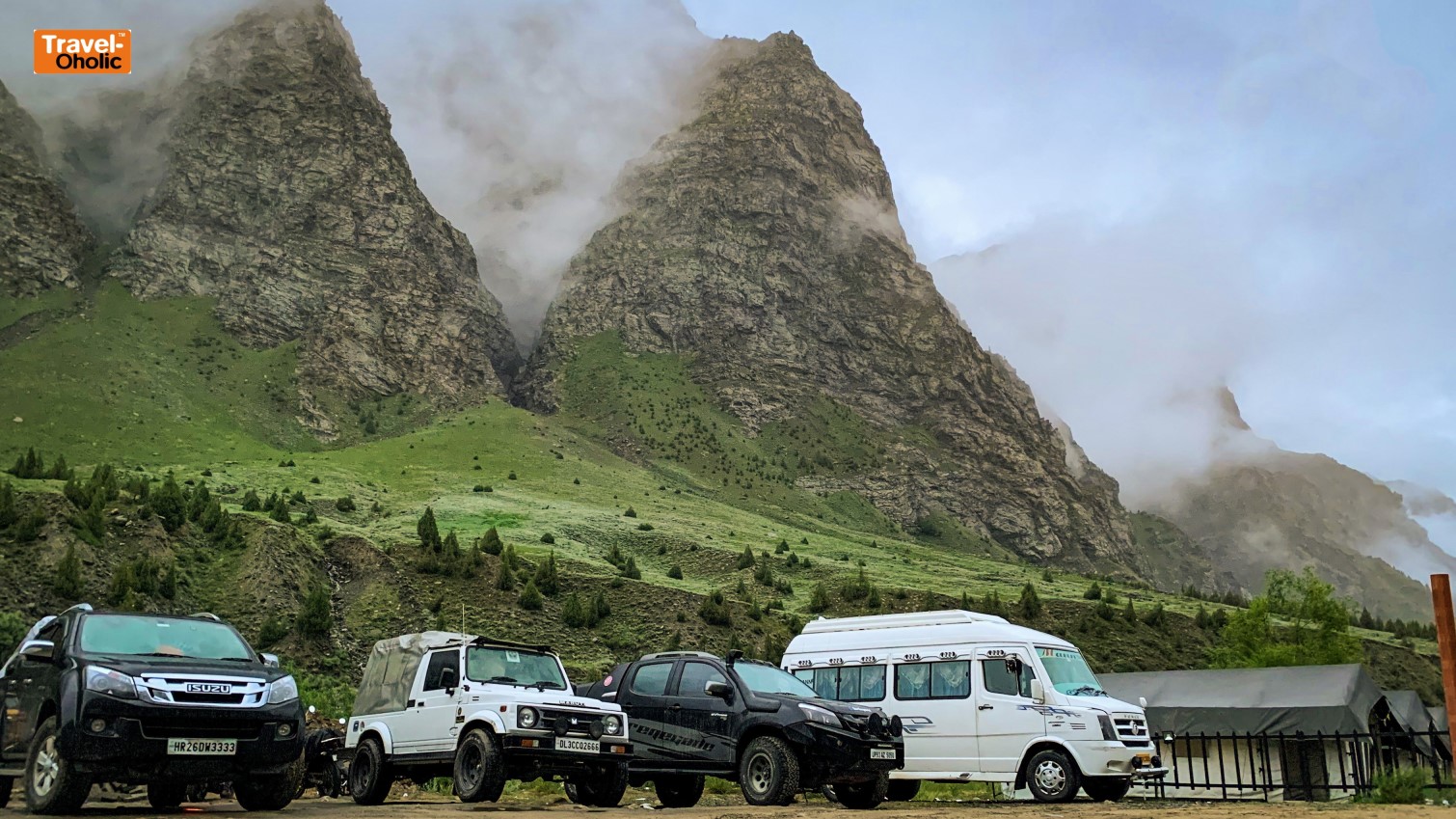
LAHAUL
Lahaul Valley has become the most popular tourist destination of Himachal due to its easy approach after the opening of the Atal Tunnel, Rohtang. Thousands of tourists are visiting Lahaul Valley every day to enjoy its breathtaking beauty. Lahaul Valley, which further has many small valleys, is home to beautiful landscapes, towering peaks, deep valleys, hanging glaciers, rivers, monasteries, temples, a mix of Hindu-Buddhist cultures and winding roads. Lahaul and Spiti are two sub-divisions of Lahaul-Spiti district.
Lahaul and Spiti are divided by mighty Kunzum pass. However, jurisdiction of Spiti valley begins from Koksar, beyond Gramphu, but its first village is Losar, on the other side of the Kunzum pass. Keylong in Lahaul is the administrative headquarters of the district
PARVATI VALLEY
Himachal Pradesh is one of the most preferred holiday destinations for many of us, and Parvati Valley without second thoughts is the hotspot of leisure stay and beautiful landscapes.
Parvati Valley is ripe with myths and the folklores of Gods visiting and staying back. Let’s throw light on some of the most interesting stories which surround this mystical valley.
It is said that Lord Shiva meditated in this valley for about 3,000 odd years. He is believed to have taken the form of a naga sadhu or a naked ash-smeared sanyasi. Seasons came and went and one day he opened his eyes and looked at this untouched, beautiful landscape and named it Parvati after his consort.
When Shiva and Parvati where staying in the Parvati Valley, Parvati happened to loose her earring, which had precious stones embedded in it, in the waters of a stream. Upset with the loss, she came to Shiva asking him to retrieve it, who in turn asked one of his bhootaganas to find the jewel. However, the bhootagana returned, unable to find the jewel. Shiva is said to have opened his third eye, which brought about havoc and anarchy in the world. To pacify Shiva, Sheshnag or the serpent god was appealed, who hissed and it gave rise to the flow of boiling water. The water which spread over the area eventually brought out the lost jewel and the place got its name, Manikaran.
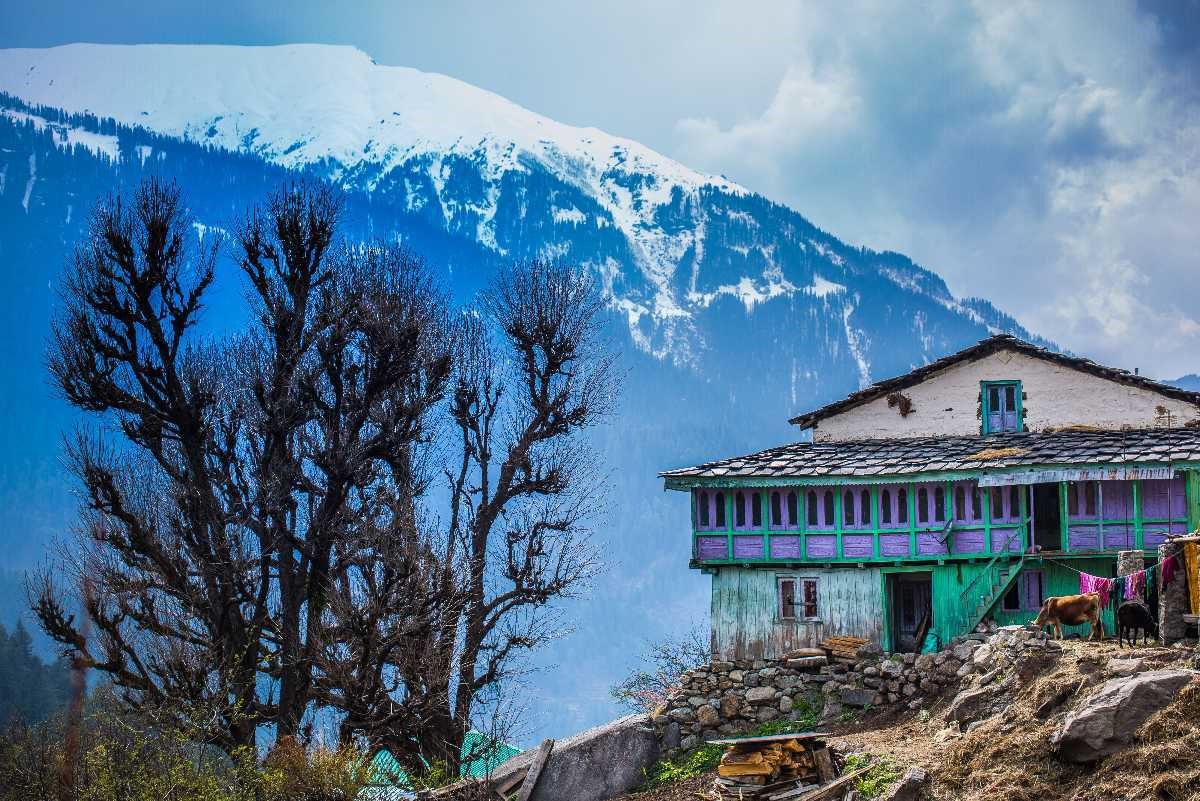
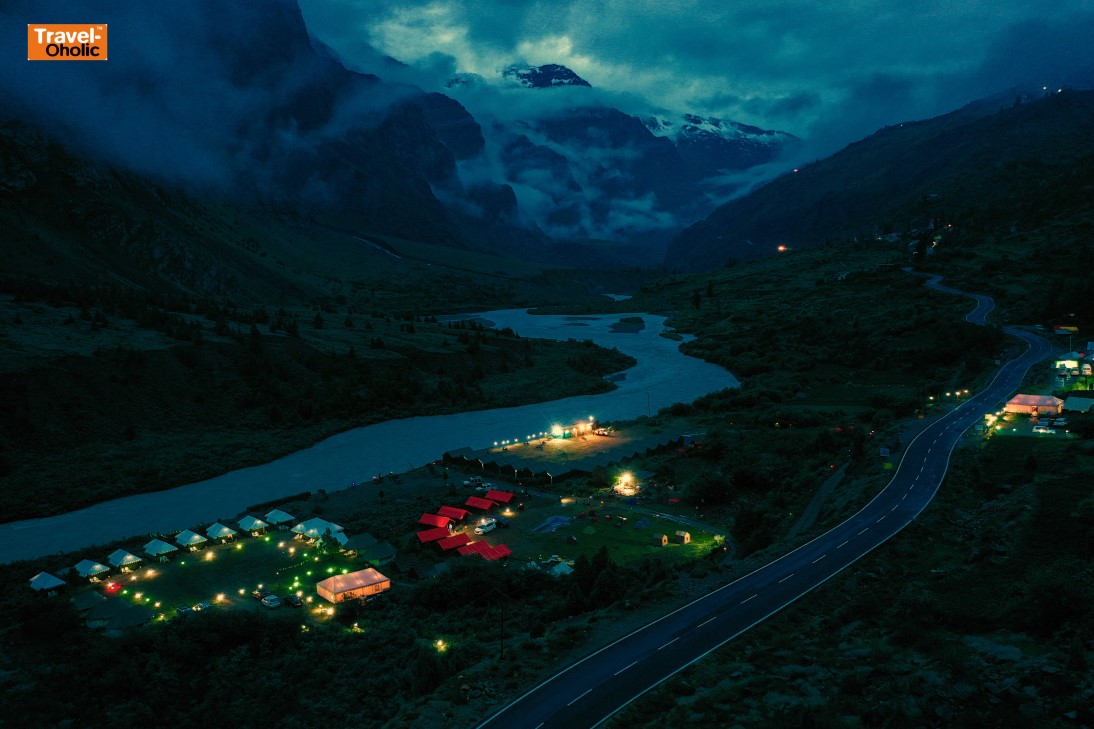
JISPA
Jispa, with an altitude of 3,200 metres, is located in the Lahaul Valley and is a pleasant hamlet next to the Bhaga river, offering some of the most scenic and remote views in India. This tranquil village is surrounded by lofty peaks and has a small, friendly community. Jispa has its own monastery but visitors often make time to see the Gemur Gompa Buddhist monastery, four kilometres from Jispa. The 700-year-old monastery contains ancient Buddhist artefacts dating back to the 11th century including fascinating miniature paintings. Visitors who come to the monastery in July are privy to the ‘devil dance’ – a ritualistic performance which monks believe drives out evil and brings about good fortune.
GREAT HIMALAYAN NATIONAL PARK
Great Himalayan National Park was constituted in 1984 and was formally notified as a national park in 1999. It is located in Banjaar Sub-Division of Kullu District of Himachal Pradesh, India, in the far Western Himalayas. GHNP is one of the most recent additions to a huge network of wildlife reserves found in Himalayan region in India and adjoining countries. Great Himalayan National Park was awarded UNESCO World Heritage Site status in 2014, in recognition of its outstanding significance for biodiversity conservation. The park protects over 1,000 plant species, including many medicinal herbs, 31 mammal species and 209 bird species, as well as amphibians, reptiles and insects. Four of GHNP’s mammal species and three of its bird species are globally threatened, including the musk deer and the western horned tragopan.
Great Himalayan National Park is spread across four valleys, each of which offers wide variety of endemic and exotic flora and fauna. Himalaya is known to be a home to 10% of world’s and 50% of India’s endemic plant species. Travellers can embark on various treks in the region that are suitable for amateurs as well as experts
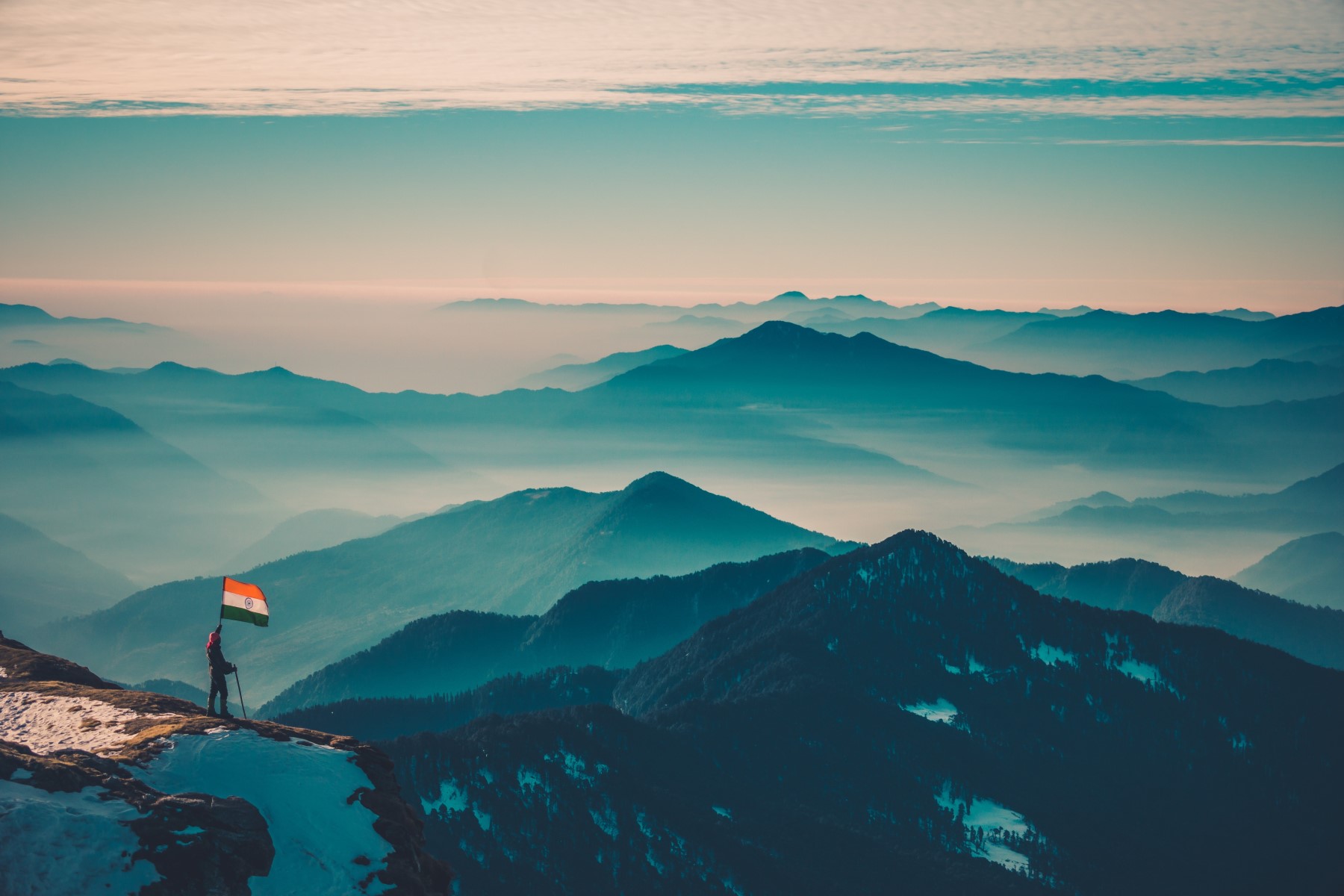
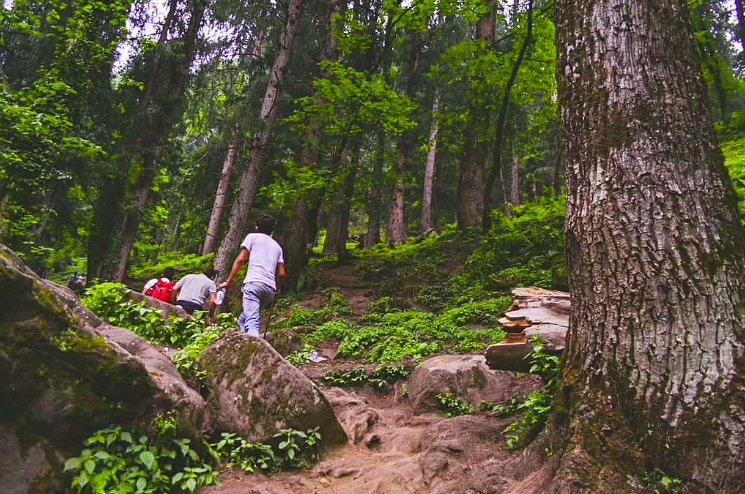
KASOL-KHEERGANGA TREK
Kasol- Kheerganga Trek is most scenic and adventurous trek in the Himalayas. It, is widely popular for dense pine forests, natural hot water springs , waterfalls , short hikes, serene villages and the valleys natural beauty. Parvati Valley is famous for dense pine tree forests, hot water springs, beautiful waterfalls, easy short hikes, and stunning valley views. Kasol also known as Mini Israel. It has famous cafes and hostels overlooking the valley. On this trip, you also visit the picturesque village- kalgha. And can experience & enjoy a panoramic view of the surrounding Himalayas.
SANGLA VALLEY
The picturesque and heavenly Sangla valley of Kinnaur attracts backpackers and travelers alike. It is named after Sangla village — the largest village of the Sangla valley (also known as Baspa valley or Tukpa valley) and one of the largest in Kinnaur.
The valley is acclaimed for spectacular scenery and indigenous architecture of Sangla Bering Nag Temple, Kamru village fort, Sangla Buddhist monastery. Strolling along the beautiful Baspa riverside and riverbanks is my favourite thing to do in Sangla valley. The standout of the valley is India’s last village from Tibet side – Chitkul. Sangla valley is also the gateway to many high altitude Himalayan treks like Lamkhaga Pass, Rupin Pass & Borasu Pass Trek that either starts or end at Chitkul.
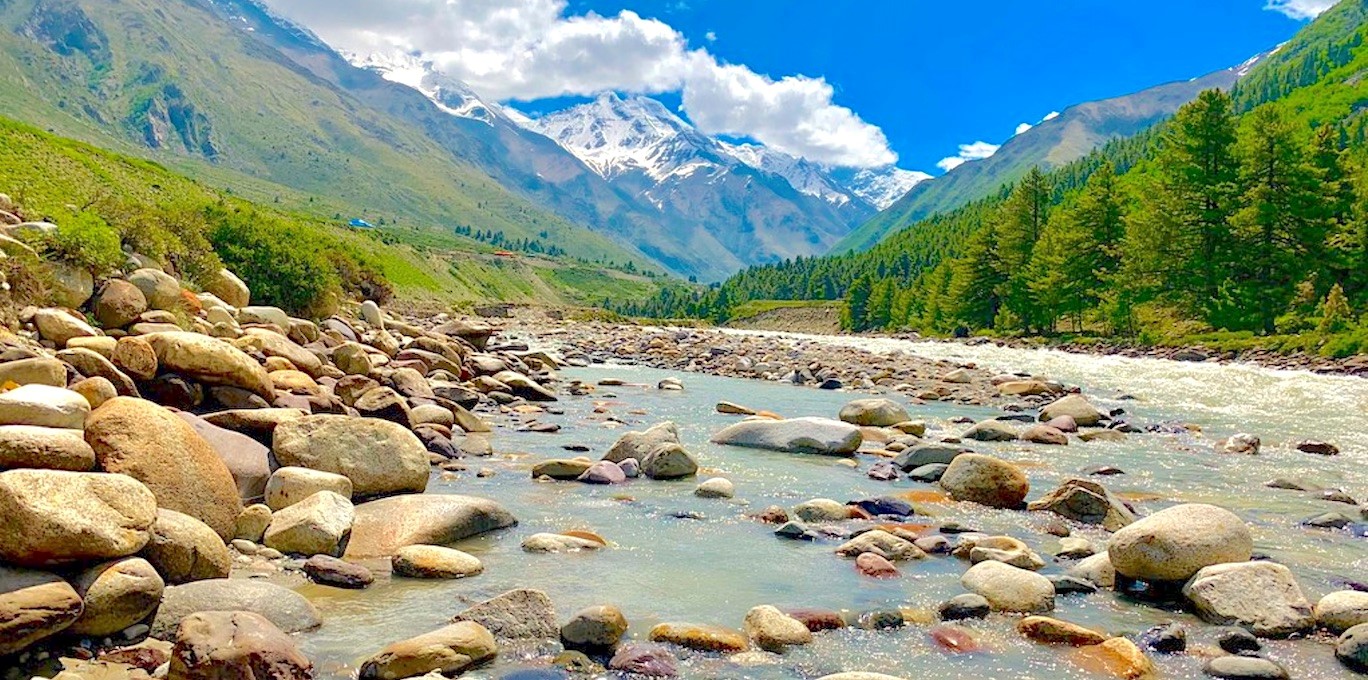
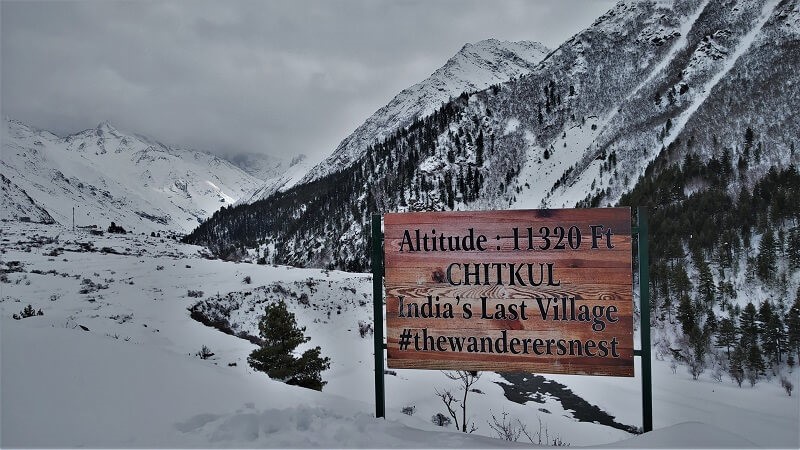
CHITKUL
Situated on the old Indo-Tibetan Road, and nestled in the Sangla Valley of Himachal Pradesh, Chitkul is believed to be the last inhabited village within the Indian borders. Located at an altitude of 3,450 meters, and 28 kilometers away from Sangla, Chitkul is like a doorway to the exquisite landscape of breathtaking beauty and a serene environment. Surrounded by mountains, orchids, huge rocks, meadows, jungles, rivers, and grasslands, Chitkul has a unique identity among other hill stations. A car or bus ride to the village of Chitkul is a pleasant experience. Tourists can go trekking in the nearby jungles and to a wildlife sanctuary. As per the legends, the people of Chitkul were known as Kinnaras as it was believed that they were half-mortal and half deity. The Kinnaur district of Himachal Pradesh was abode to these supernatural beings as it was no less than a paradise that made them feel close to God while living in an earthly environment. The best thing about this village is that the culture and religious values here are secular and diverse. This region is heavily influenced by Animalism, Hinduism, and Buddhism. Dotted with ancient temples and monasteries, Chitkul never seizes a moment to amaze its visitors.
CHAMBA
Chamba, perhaps the loveliest valley of Himachal, is a treasure trove of scenic attractions, sparkling streams, primeval lakes, meadows, dense alpine tree covers, rich wildlife and fertile valleys. At the crossroads of Dhauladhar and Zanskar ranges, the region borders jammu & Kashmir and is the northernmost district of the state. Fast flowing streams drain into River Ravi on the southern side and into River Chenab on the northern fringes. The land is populated with a lively people who are endowed with a vibrant culture that stretches back thousands of years. Charm of the natives heartwarming hospitality is such that it has you longing for more. A splendid artistic heritage includes fine temple architecture, beautiful miniature paintings and the exquisite embroidered Chamba Rumal.
Nestling on the right bank of River Ravi, on terraced flats at a scenic place where the smaller Sal River meets the large one, the sprawling township of Chamba was founded by Raja Sahil Varman in 920 AD. It was at the insistence of his daughter Champavati that the king shifted his capital from Bharmaur to Chamba. After Chamba merged with the Indiant union in 1947, the town now is a district headquarter.

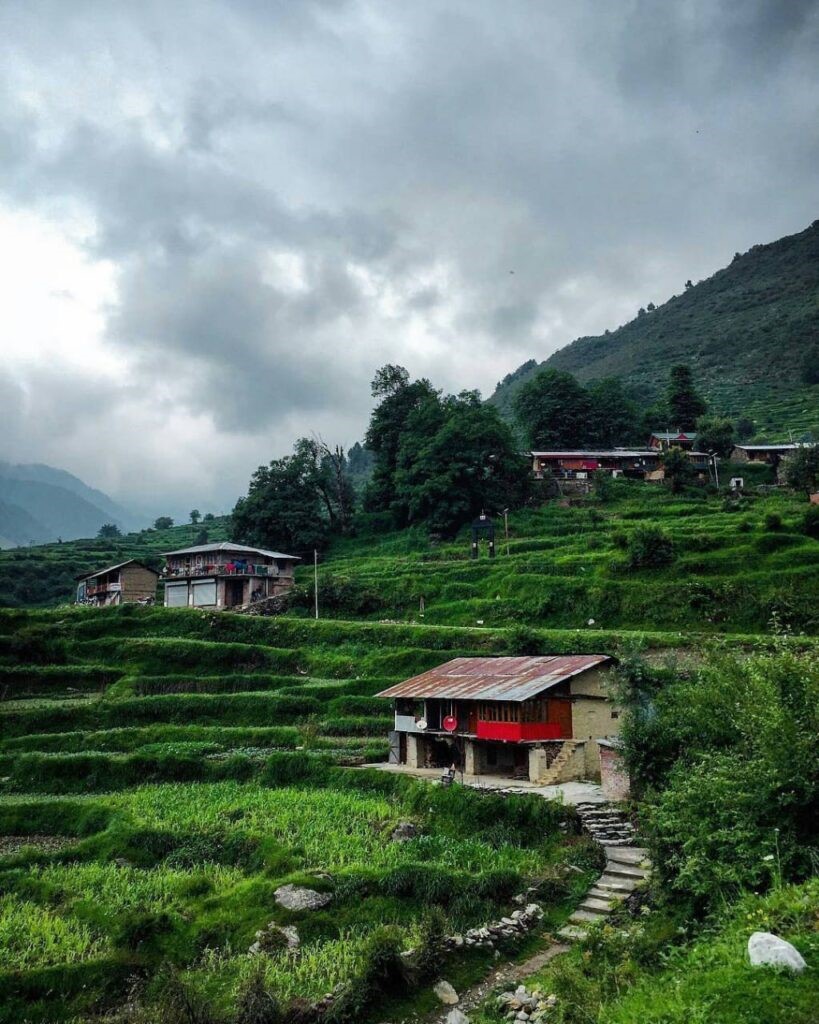
UDAIPUR OF HIMACHAL
Renowned for the ancient Marikula Mata Temple, the picturesque hamlet of Udaipur is located on the banks of Chandrabhaga River in Lahaul and Spiti district of Himachal Pradesh. The pilgrimage site is considered holy by both Hindus and Buddhists. Located at an altitude of 2,743 meters, Udaipur is 53 km to the north of Keylong. It was known as Markul in olden times because of the temple dedicated to Markula Devi, an incarnation of Goddess Durga. In 1695 AD, it was renamed as Udaipur in honour of King Udai Singh of Chamba. King Udai Singh became very popular after he elevated Udaipur to the status of a district centre.
Udaipur is also popular as a camping site. Greenery and breathtaking vistas add to the charm of the place. Unlike the Lahaul valley, which is known for its barren splendour, Udaipur is green and appealing. Udaipur stands at the confluence of Chenab and Mayar Nallah and also serves as the gateway to Mayar Valley. Several trekking routes start from Udaipur to places like Kibber, Kangla and to Zanskar.
BAROT VALLEY
Barot Valley is also known as “a trekker’s paradise” If you are a hardcore traveler you must have heard about it. If you haven’t then don’t worry. It doesn’t make you less traveler. The thing is, I just want you to read this article carefully so that you can add this place to your bucket list. Barot Valley is situated in Himachal Pradesh. It is like a lost haven first time founded by the Britishers because of the Uhl river. British build an electric power plant on that river, that is how Barot Valley came into every Britisher’s list as a vacation spot.
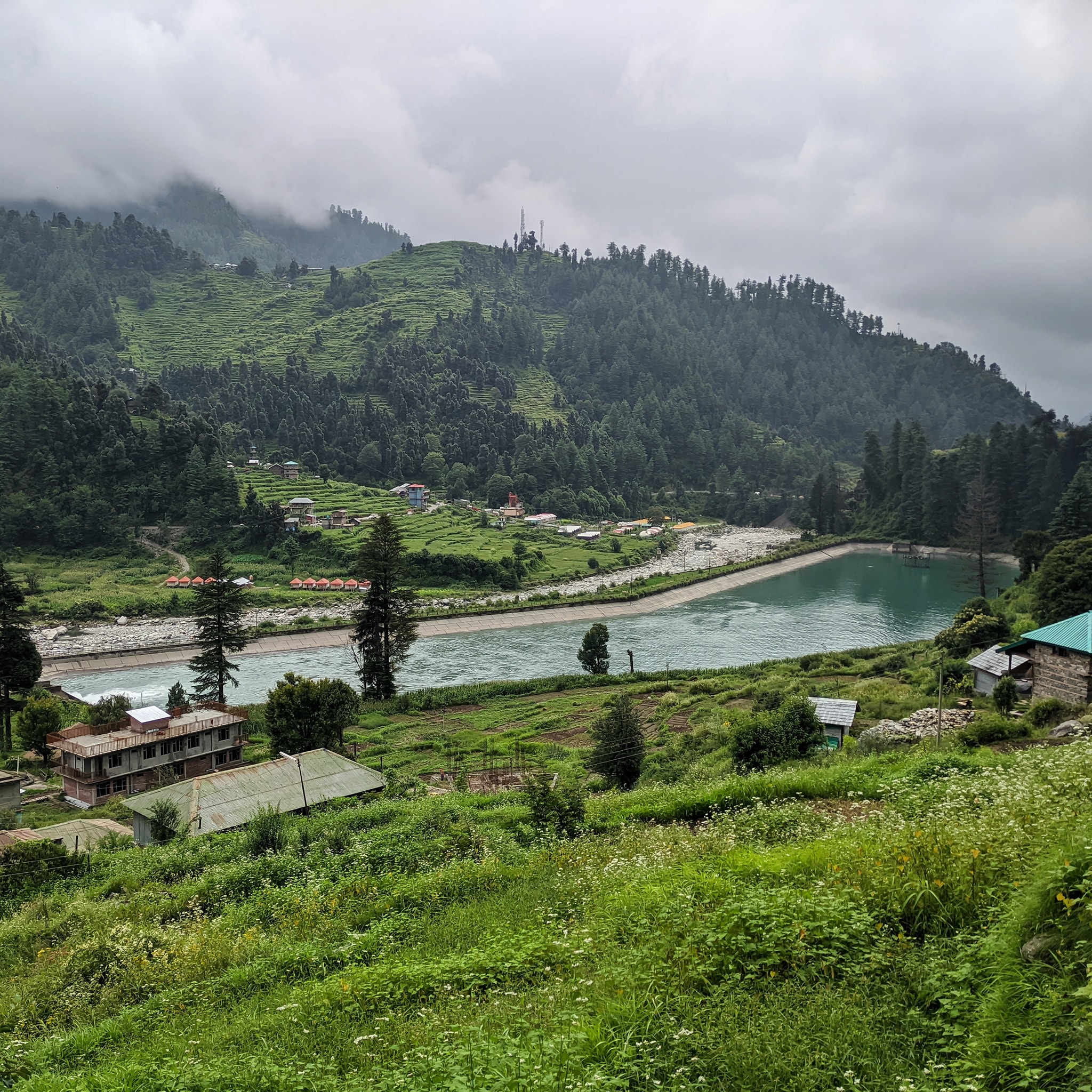
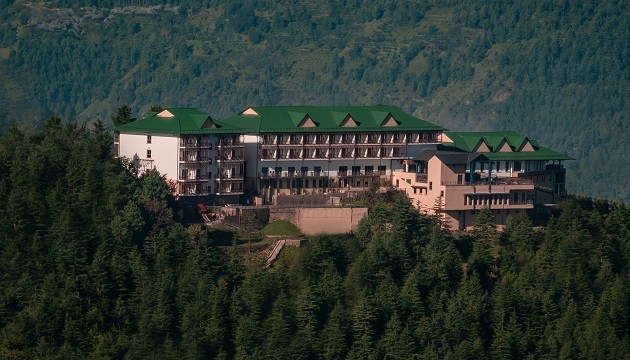
THEOG
Think about small and cosy houses, windows with amazing views of the Himalayas and fireplaces at chilly nights and think about Theog. The beautiful and charming hamlet of Theog is situated in Himachal Pradesh. Only 32 kilometers away from the hill station of Shimla, the unexplored and untouched spot makes a perfect place to feel a chill in the air. Travel to Theog and just go about doing things your way in Theog- relax and unwind in the lap of nature or get active and explore the environs through the spectacular walks.
A quiet escape and one of the less crowded attractions of the state, Theog in Himachal Pradesh, warmly wrapped in the arms of the mighty Himalayas, has everything a popular hill station can give you minus the tourist rush. Theog makes up for a beautiful weekend getaway in the hills, comfortably located in the lap of nature. It is also considered one of the most favorite camping site options for campers. Much away from the chaotic atmosphere of cities and the excited shouts of joy and chatter of popular tourist destinations, Theog can be called an underrated destination, which in fact works in its favour, away from the city jazz and close to the lost tranquilly of nature.
KALPA
A small mountain town located in the state of Himachal Pradesh, at a distance of 240 km from Shimla, Kalpa is a treat to the eyes. This pristine town is situated in the lap of the Kinnaur Kailash at an extremely high altitude of 3000 mt from the sea level. The place is cold all throughout the year, with stretched areas of snow to whatever meets the eye in the extreme winter months. Positioned close to the Satluj River Valley, the place lets the visitors experience the best of nature to whoever might come its way. Numerous waterfalls and hillslopes in the locality are bound to leave you spellbound while you make your way to this small town Kalpa, the main village of Kinnaur, in the Sutlej River Valley is a place to remember and cherish. Known for its many beautiful temples and monasteries, this town is also famed for its apple orchards. The majestic Kinnaur-Kailash range peeking from across the Sutlej River makes for a blissful break. An early morning walk through this paradise will give you a chance to experience magic and mystery with the sunrise. The pinkish hue on the peaks that slowly gets tinted with the golden glow is a sight to behold. Adorned with rich flora and fauna, this small hamlet is a must visit destination.
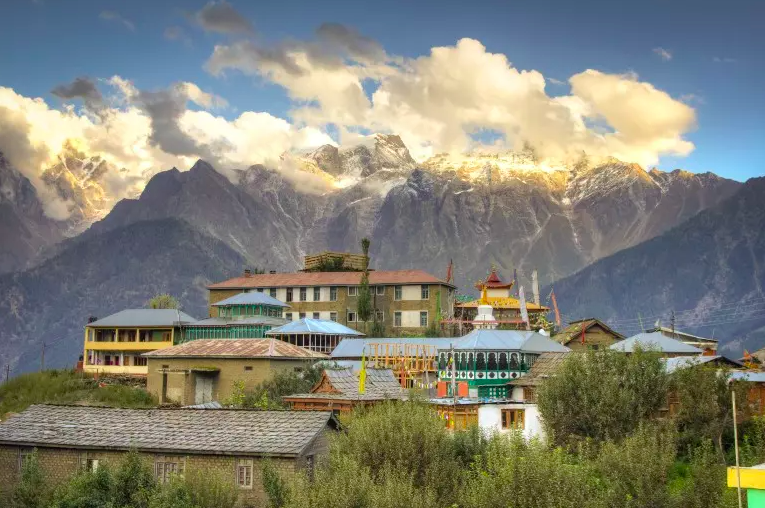
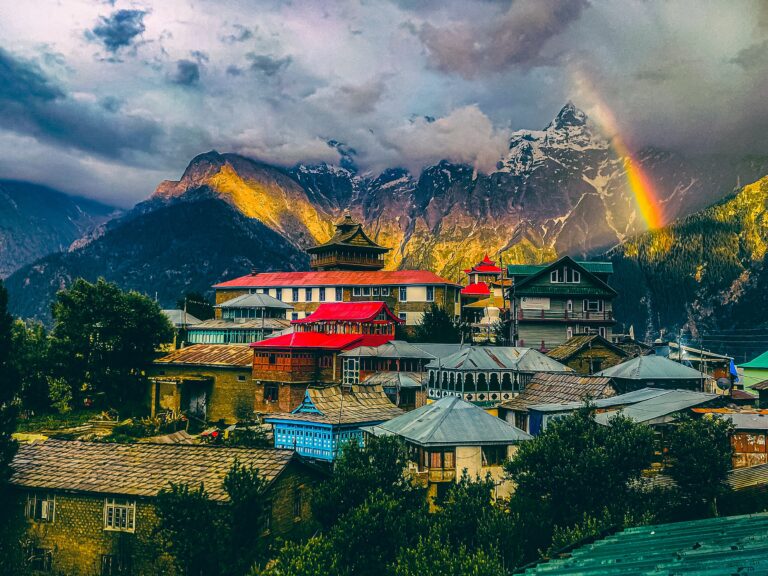
NAKO, KINNAUR
Located at the height of 3,600 metres above the sea level, Nako is a mesmerising and picturesque village that is full of eye capturing surroundings and is the most significant village situated in the Kinnaur district of the Himachal Pradesh. The village can be found on the eastern end of the Kinnaur District and is most popular amongst nature lovers and trekkers. While travelling to Malling Nullah, Nako village falls on the way and is, in fact, the last attraction on the way to the final destination. This beautiful village is rightly known as the ‘Land of the Fairytales’ as it is surrounded by the greenery of nature and is home to many rare species. The village also offers the visitors with multiple sightseeing options such as the famous Nako Lake, Buddhist Temples and Rakham amongst others. Near the lake, one can also find the footprints of the saint Padmasambhava, who is believed to have meditated at the spot for many years. The Nako Village is located between Kinnaur and Spiti Valley, and thus shares a mixed culture of both. The village is also one of the most happening travel destinations that are located in the area. Since the stretch lies close to the Tibetan Border, travellers need inner line permits to travel to the region. Foreign nationals also need permissions to stay overnight in any part of the village. This exciting village seems so much removed from reality that the visitors feel as if they have been transported to some other world altogether, and thus, the Nako Village is a must visit on your next visit to Himachal Pradesh.
MANALI
One of the most popular hill stations in Himachal, Manali offers the most magnificent views of the Pir Panjal and the Dhauladhar ranges covered with snow for most parts of the year. With the Covid-19 pandemic going on, Manali has evolved to be a place loved by young people looking for longer stays for workation. With ambient cafes, good wifi availability, small eateries and convenient shops, Old Manali is among the favorite neighbourhood for such people. There are many homestays and hostels offering dorm beds for cheap for longer durations. Manali has many trekking options around it, making it a great base for exploring this side of Himalayas. River Beas provides great rafting options in the nearby town of Kullu. Adjoining Parvati river, lies the Parvati Valley with Kasol, Manikaran, Tosh and small villages attracting travellers for longer stays. Atal Tunnel now allows travellers to reach Sissu within a few hours making Spiti way more accessible. It snows the most in the months of January & February followed by December and March. If you’re very lucky, you might find some snow in April. Tourists flock to Rohtang Pass & Solang valley for various adventure activities including skiing, paragliding, horse-riding & zorbing. Rohtang Pass is almost always covered with snow and can often get overcrowded and see traffic jams.
